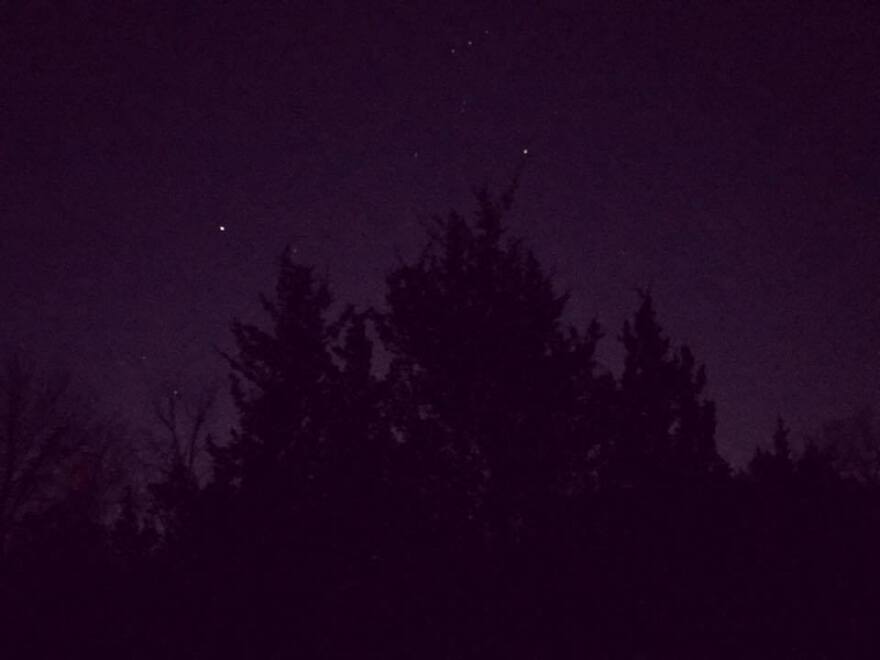This year, the December night sky features a rare phenomenon that is famously called the "Christmas Star.” It’s called that because, according to the Bible, it's what the Magi followed as they traveled to Bethlehem to see the new child, Jesus.
Walter Trentadue is with the Weiskopf Observatory, which is part of the Byron Forest Preserve District. He was an adjunct instructor at Rock Valley College with his own curriculum in astronomy classes for continuing education and he taught at Harper College "with the same kind of curriculum."
"Astronomy has always been my passion. I've been doing astronomy since I was about eight years old."
One of his first jobs was at the Adler Planetarium where he worked for seven years. That's where he first learned about the Christmas Star, which he said "is probably a misnomer."
"The 'Christmas Star' or 'Star of Bethlehem' was most likely a conjunction of two of the large planets Jupiter and Saturn very close together.
"It may have turned into a 'triple conjuction' when a third planet, Mars, entered the picture," he said.
"Astronomers," he said, "can go back in history and recreate what the night sky looked like, including the exact positions of the planets."
Trentadue explained that the three Maji were astrologers who were familiar with celestial events.
"Astrology is not a science, but back then it was considered a science," he said. "It was very important in the daily lives of people. Astronomical events influenced people's behavior down on Earth."
Trentadue said up until Phase Four Tier Three COVID mitigations, he and his colleagues had been watching the planets from the observatory.
"We were watching Jupiter get closer and closer to Saturn in the southern sky just about the south horizon, maybe 20 degrees up," he said. "They look like bright stars, except they do not twinkle."
Trentadue explained how you can differentiate planets from stars.
"They're not twinkling because they have an angular diameter."
He said he hopes you get outside and look up every night, but especially on December 21, the night of the winter solstice.
"The planets will be about 1/10th of a degree apart, which is pretty close," he said. "And it's pretty rare. The last conjunction that was that close I believe was in the 1600s."
When the two largest planets get together in the sky, he said they may appear as a single bright star, but added, "I think your eyes will be able to separate them into two objects, but they will be very close together."
Trentadue said you can watch the southern skies with your binoculars or a telescope but the conjunction is a "naked eye event."
"You don't beed any optical aid," he said. "You can just go outside and look in the southern sky after sunset as the sky gets dark. You'll see it pretty clearly."
Though the Dec. 21 conjunction has historical significance, Trentadue said it's important for people to notice the sky every day because, "Things are happening all around us in the universe."
The Weiskopf Observatory is hosting an outdoor "conjunction viewing" event from 5-7 p.m. on Dec. 20 and 21 at the Jarrett Prairie Nature Preserve located at 7993 North River Road in Byron. Masks and social distancing required. Because of COVID, the observatory and the Jarrett Center are off limits. Viewing will be done outside in small groups, one carload at a time. Interested people should call ahead first in case of inclement weather or possible changes in COVID regulations. The Byron Forest Preserve phone number is 815-234-8535.



